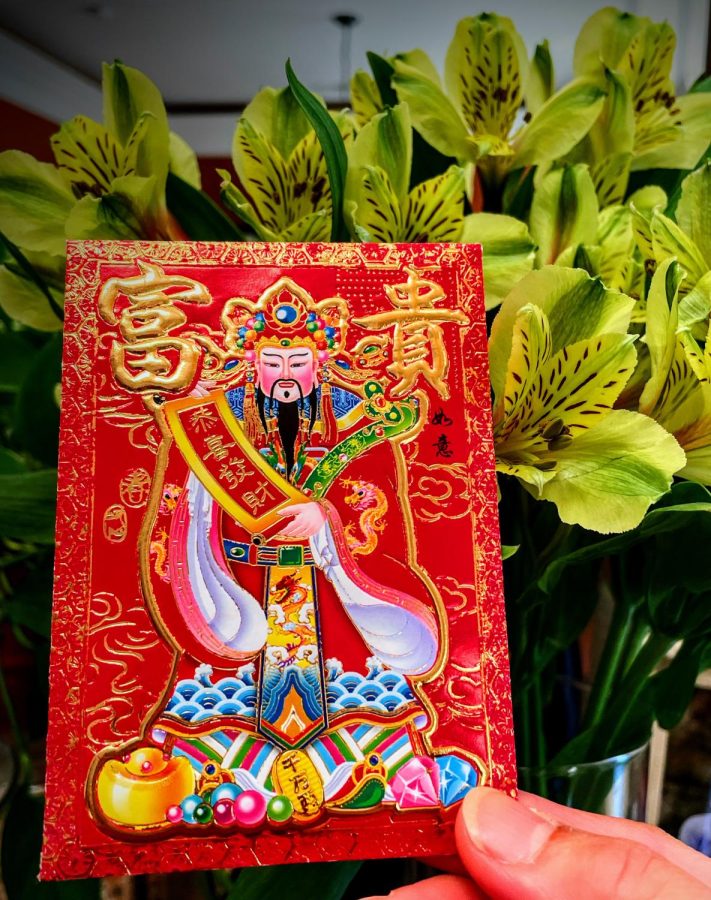Lunar New Year 2022: Year of the Tiger!
February 5, 2022
The first of February marked 2022’s Lunar New Year! Also known as the Spring Festival, Lunar New Year is a holiday that celebrates ancestors, family, and friends with food, games, and unity. This year is the year of the tiger, specifically the water tiger, which happens every 60 years. History.com states that this specific version of the tiger zodiac “is action-oriented and represents strength, bravery and clearing away evil.” Typically celebrated by people from East and/or Southeast Asia, there are many names for this celebration in the native languages of the places that observe this holiday. In China, for instance, it is known as Chunjie, or in Mandarin 春節(Traditional Chinese)/春节(Simplified Chinese), pronounced chūnjié, while Koreans call it Seollal, 설날 in Korean, and the Vietnamese refer to it as Tết, pronounced “thut”.
Among the different cultures surrounding this wonderful holiday, everyone celebrates it in their own fun way. Traditionally, Lunar New Year begins with the first new moon of the lunar calendar and ends on the first full moon, meaning that it technically lasts 15 days total. Some celebrate all the days, while many just celebrate one or a few, and that depends on both the family’s decision and how their specific culture celebrates this holiday. Because of how the days fall on the lunar calendar, the first new moon varies, with this year’s Lunar New Year falling on the 1st of February, while last year was on February 12th.
Families, friends, and everyone close gather together to eat various foods and visit places for different Lunar New Year events. Junior Lilian Qu says, “My family makes special food, or we go to church for a big potluck and Lunar New Year program.” Sophomore Trinity Webber says, “Usually we either go out or make Korean dishes to have. And there are lots of Korean snacks. We spend lots of time with the family too.” Spending time with family, friends, and your community is very important during Lunar New Year. Senior (and fellow friend) Diane Pham says before COVID, there was a Lunar New Year Festival, or Lễ Tết (“lay thut”) in Vietnamese, hosted by the local Vietnamese community in Huntsville. She (and myself, as I have also gone to this festival) would “[g]et our eardrums blasted off every year” from the music whilst eating food and chatting with friends and family.
Many people clean their houses before the New Year to perform a “sweeping of the grounds”, or to sweep out the bad luck of the last year, as well as to create more open space for good will and good luck. During the celebration, some homes hold rituals to give offerings to ancestors, such as food. Others put up red paper and banners inscribed with messages of good health and fortune around and inside their homes. Red firecrackers are set off by many to ward away the last year’s bad luck. Small red envelopes of money are handed to family members known as “lucky money”. Taken with two hands after the receiver says their thank you along the lines of “Happy New Year, I wish you good health”, this money is usually in brand-new banknotes, as old ones are considered less lucky. (I usually receive two-dollar bills in my lì xì [“lee see”, lucky money in Vietnamese], as my family says that these are lucky bills or something along those lines, as they are quite rare.) And as Freshman Kuan He puts it: “Money…Yes.”
You have most likely noticed that the color red makes quite an appearance in many traditional items during Lunar New Year, and for good reason, alongside many other superstitions around this celebration. The color red is a symbol of happiness and good fortune, and this association with the fiery color is usually reserved for holidays like this one. When Lunar New Year comes around, this color is absolutely everywhere. It is especially special in the red lucky money envelopes, as they send best wishes and good luck to the receiver. Also along the topic of the red envelopes, the number four is very unlucky, so there should never be any sign of the number in the envelope: do not give $4, do not give four bills, do not have anything in fours on the envelope’s decoration, et cetera. And remember the “sweeping of th grounds” concept? It is actually bad luck to clean on Lunar New Year, as it is seen as sweeping out all the good luck you have received. The superstitions of course depend on the family and their traditions, but since the holiday is centered around giving and getting good fortune, it is no wonder that everyone wishes to create as much luck as they can.
Another unlucky belief is that it is bad luck to eat leftovers on Lunar New Year. So, there are many traditional foods that families cook up for this holiday from their cultures. Qu says that her foods are “different every year, there’s usually dumplings though! We had egg dumplings this year.” Dumplings are very common during Lunar New Year. Tang yuan (湯圓[TC]/汤圆[SC]), glutinous rice ball soup, is a well-loved Chinese dessert for the New Year. Some other foods include fish (fun fact: in Mandarin has a similar pronunciation as “abundance” and thus symbolizes that), chicken, spring rolls, noodles, and more. Webber usually has “lots of rice and different types of bulgogi. My mom used to make Tteokguk for us for the new year,” where tteokguk (떡국) is a chewy rice cake soup and a traditional Seollal food. Thịt kho trứng (“tut kaw choong”), or carmelized pork and eggs is a traditional Vietnamese dish for the New Year (that is my personal favorite), as well as canh khổ qua (“can coh quah”), or stuffed bittermelon soup, and bánh chưng (“bahn choong”), or square pork sticky rice cakes.
Lunar New Year is a wonderful holiday to get together, have good food, and enjoy the many traditions. For this year’s year of the tiger, maybe visit your local restaurant that has traditional foods, or attend a Lunar New Year event in your community. However you celebrate, have fun and enjoy the Lunar New Year celebration. 新年快乐 (xīnnián kuàilè)! 새해 복 많이 받으십시오 (saehae bok mani badeusipsio)! Chúc mừng năm mới (chuk moong nam muy)! Happy Lunar New Year!


